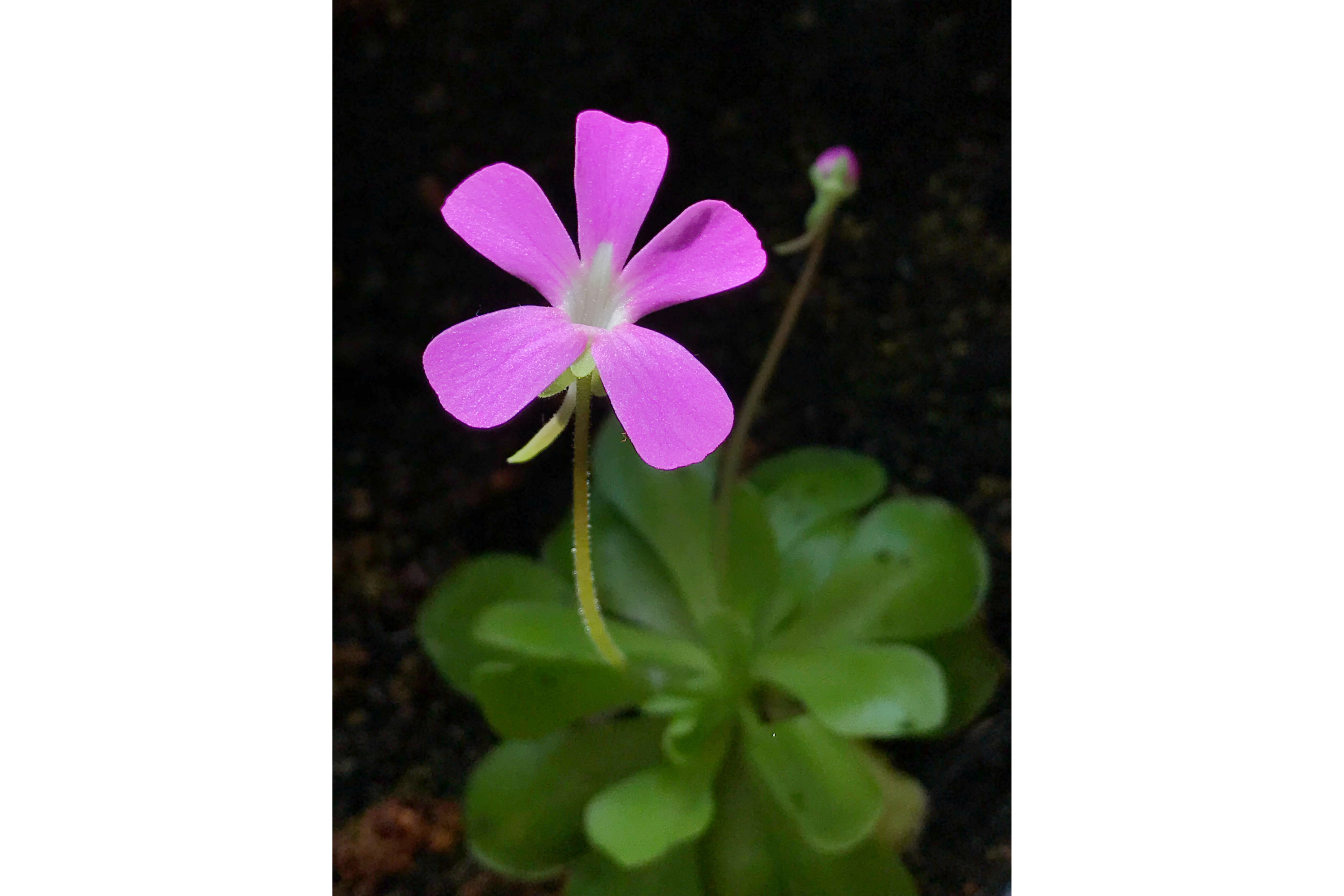Butterwort
(Pinguicula elizabethiae)

Description
Pinguicula elizabethiae is a perennial rosette-forming insectivorous herb native to the Mexican states of Querétaro and Hidalgo. A species of butterwort, it forms summer rosettes of flat, succulent leaves up to 5 centimeters (4 in) long, which are covered in mucilaginous (sticky) glands that attract, trap, and digest arthropod prey. Nutrients derived from the prey are used to supplement the nutrient-poor substrate that the plant grows in. In the winter the plant forms a non-carnivorous rosette of small, fleshy leaves that conserves energy while food and moisture supplies are low. Single purple flowers appear between July and October on upright stalks up to 75 millimeters long. The species was described in 1999 by S. Zamudio, who placed in the section Orcheosanthus. It is closely related to P. colimensis. The generic name Pinguicula is derived from the Latin pinguis (meaning "fat") due to the buttery texture of the surface of the carnivorous leaves. The specific epithet elizabethiae refers to Zamudio's friend Elizabeth Arguelles, an enthusiastic collector of flora from Querétaro. Like many Mexican butterworts, P. elizabethiae is seasonally dimorphic, in that it undergoes two distinct growth habits throughout the year. During the summer when rain and insect prey are most plentiful, the plant forms a ground hugging rosette up to 12 centimeters (5 in) in diameter and composed of obovate–spatulate to suborbicular–spatulate leaves. These leaves are carnivorous, having a large surface area densely covered with stalked mucilaginous glands with which they attract, trap, and digest arthropod prey, most commonly flies. These so-called "summer leaves" are replaced by "winter rosettes" of small, glandless succulent leaves with the onset of the dry season in late fall. This protective winter rosette allows the plant to undergo winter dormancy until the first rains begin in spring. Flowers born singly on upright 35–75 millimeter (1+3⁄8–3 in.) peduncles emerge from July–October. Pinguicula elizabethia is currently known from only a handful of sites in the canyons of Moctezuma river and its tributary Arroyo Toliman, and may therefore represent a new endemic species for the canyon system. Here it grows on steep slopes and vertical cliffs facing north to north-east, at an altitude of 1000–1600 meters (3300–5250 ft.). Surrounding vegetation is submontane, and companion plants include Selaginella lepidophylla, Notholaena sp., Cheilanthes sp. and mosses.
Taxonomic tree:







